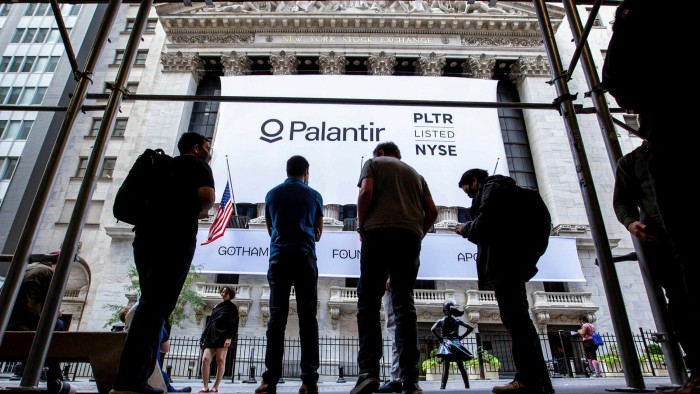Could ‘testimonial discrepancies’ prove a powerful strategy for litigators?

Roula Khalaf, Editor of the FT, selects her favourite stories in this weekly newsletter.
A feud playing out in the German courts between US data giant Palantir Technologies and one of its early investors has opened the door to using evidence gained in US courts to protect intellectual property in Europe.
The development could unleash a raft of evidence for future cases that otherwise might not be seen by European courts, as US courts are less stringent in their discovery rules.
When defending patents, companies will often be litigating the same case in multiple jurisdictions. As a result, the same quarrel can end up in courts around the globe — from Washington to London, Paris and Tokyo — depending on where a company has lodged patents to protect its IP, and where those rights have been infringed.
Palantir has been in one such fight with Marc Abramowitz, a Palo Alto software engineer and venture capitalist, for the past few years. The company alleges that Abramowitz applied for patents on cyber inventions based on trade secrets obtained from the company in a 2014 meeting with a Palantir employee.
Palantir contends that Abramowitz claimed in a Delaware court that he did not remember the meeting, yet days later in a German court he said he remembered specific details about the meeting. Palantir wanted to provide proof to the German court of Abramowitz’s inconsistent testimony but was unable to, due to the limited rules of discovery in German courts.
However, US courts have a provision that allows them to supply foreign jurisdictions with evidence under certain circumstances. So, in October 2021, Palantir asked a federal court in Colorado to deliver the German court Abramowitz’s US deposition. Abramowitz has denied any wrongdoing.
The strategy has been used successfully before, in a range of patent cases.
In 2015, on behalf of its client, biotech company Akebia Therapeutics, Jones Day successfully petitioned to use US discovery in a case in front of the European Patent Office and the Japanese Patent Office.
In 2019, on behalf of Lufthansa, Norton Rose Fulbright used the provision in a patent infringement case in France, Germany and the UK.
Palantir itself used the strategy on consecutive occasions in one case, to great effect: it was particularly inventive in creating a strategy based on testimonial discrepancies.
This approach has already been used successfully in the District Court for the Northern District of California to obtain evidence. And, on May 25, the federal court in Colorado compelled Abramowitz to submit evidence for review. Patent litigators are taking note.
Blair Jacobs, a Washington-based patent litigator at McKool Smith, says it is likely that Palantir’s success will result in more multijurisdictional patent litigators using it, adding that it will now be “almost always worth trying” because of the expense of global litigation and the importance of the outcomes.
“Getting that additional information seen by a judge and having a little bit of an upper hand is always worth the investment of time and funds.”
Jacobs also thinks litigators will try to look for, or even “create”, discrepancies in an opposing party’s story, so that they can “open the door” to allowing US evidence to be seen by European courts.
“It’s pretty clear that, if there’s a discrepancy, that’s something that’s going to catch a judge’s attention in the US, and make it more likely than not they’ll exercise discretion and allow evidence to be shown to a foreign court,” he suggests.
But Duncan Matthews, professor of intellectual property law at the UK’s Queen Mary University, is sceptical about the value of introducing US evidence in European patent litigation.
More from this report
Europe’s Leading Patent Law Firms 2022
Patent lawyers condemn Russian expropriation of patents as ‘act of war’
IP waiver is a ‘matter of life or death’ for one Ukrainian lawyer
China’s courts flex intellectual property muscle across borders
Nations urged to waive IP on vaccines as drugmakers insist current rules are fair
Green patents slow as net zero deadlines edge closer
Inability to patent AI creations could hit business investment
“Part of the legal test US courts need to consider is whether the request is an attempt to bypass restrictions on the discovery process in the foreign country,” says Matthews.
“That raises a big question mark in my mind, because unduly intrusive or burdensome requests may be rejected.”
Jacobs admits there has to be a reason for the inclusion of US evidence, because otherwise, in the Palantir case, “it circumvents Germany’s rules, which really don’t allow much discovery”.
But, nonetheless, he characterises the strategy as creating a “huge backdoor” that global litigators will need to deal with. “Whether you’re on the offensive side or the defensive side, you’re all going to have to make sure you’re not allowing inconsistencies — even minor inconsistencies — to creep in, because it’s something that your competition will look to capitalise on.”
Bruce Love is a freelance journalist and Washington reporter at the National Law Journal
Comments